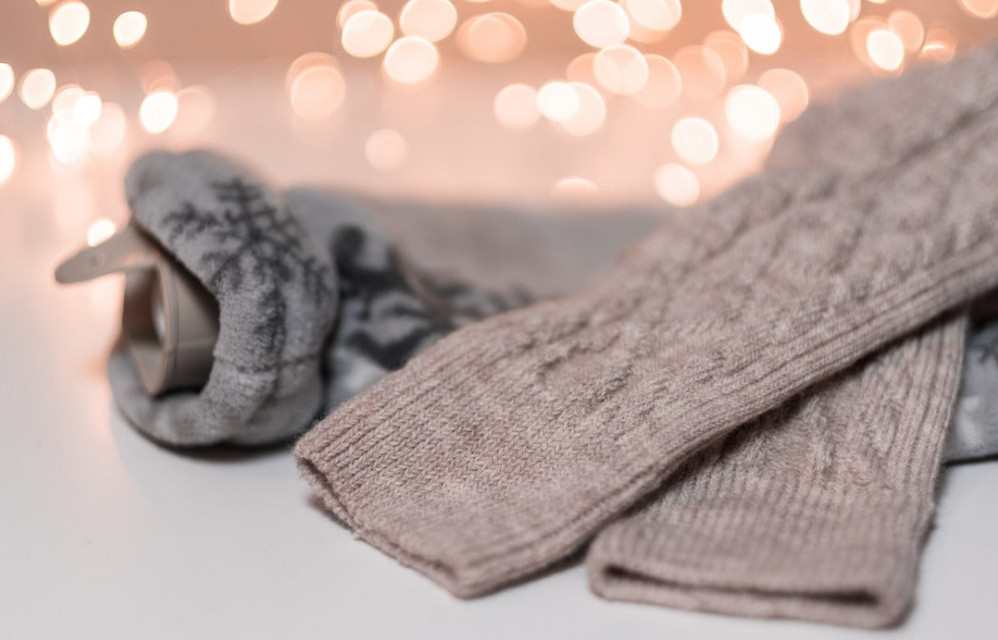In addition, here we discussed the advantages and disadvantages of each style of diabetic socks and stockings to confirm the areas the diabetic socks advertising can get ambiguous and misleading, making this product category a misnomer.
Here we also look at the differences between diabetic, compression and regular socks. Moreover, the cost variations and buying spots are also taken into discussion. At last, the report is enclosed with personalized recommendations for you to decide the best diabetic socks option for your needs in terms of authenticity and value proposition.
Without further due, let’s start by defining what a diabetic sock is.
What is a Diabetic Sock?
Diabetic socks are exceptionally intended to keep feet dry, decline the danger of foot injury, and upgrade blood dissemination. They are a critical piece of foot care, which is a significant part of diabetes the board because of expected harm to the apprehensive and circulatory system brought about by high glucose levels.
Nerve harm (diabetic neuropathy) diminishes sensation in the feet, especially the bottoms, and builds the danger of injury. It can likewise make an individual with diabetes uninformed of a physical issue and defer treatment.
Not every person with diabetes or its complications needs diabetic socks. Standard socks that are agreeable, non-authoritative, and fit well are sufficient for people who don’t have foot issues.
However, regardless you are recommended to consider diabetic socks during extensive travel, as sitting for significant periods can build the danger of blood clots.
Individuals with diabetes might benefit by continually wearing diabetic socks. More specifically for the individuals who have:
- Encountered changes in foot tone or temperature, bothering, nerve harm, rankles, or parasitic diseases.
- Often get sweat-soaked or wet feet.
- Diminished pedal heartbeat (an estimation taken at the highest point of the foot and behind the inward lower leg) is related to an expanded danger of fringe blood vessel sickness or another type of atherosclerosis.
- Gestational diabetes, and who are at an expanded danger of profound vein apoplexy (DVT), may bring down the danger of blood clusters by wearing diabetic socks.
In people with diabetes, leg amputations are common because of an assortment of tissue diseases and helpless blood courses. The guilty party is because of diabetic neuropathies that fundamentally affect foot wounds, if any.
When left untreated, obscure minor wounds and foot ulcers can form into genuine contaminations that, in the end, influence the bone and, afterwards, the entire foot. When a lot of tissues and veins are tainted, removal of the influenced appendage is the solitary alternative.
As per the American Diabetes Association, in 2010, almost 73,000 non-awful lower-appendage removals happened in people with diabetes of age 20 years or more. This was about 60% of the all-out non-horrendous lower-appendage amputations in this age group.
In the United States, over 90% of the performed amputations are because of issues related to diabetes, with 60-80% of these being lower leg or foot amputations.
To avoid amputation, the best strategy is to forestall foot ulcers and wounds from occurring in the first place.
Besides your typical diabetes routine and diabetes foot care, your footwear plays a fundamental part in maintaining your diabetes blood parameters within proper limits.
Despite the fact that some medical frameworks have excluded diabetic socks as necessities for diabetes patients, you should, in any case, investigate whether diabetic socks will assist you with living your way of life.
Now, let’s look at the difference between diabetics’ socks from regular socks to understand what is meant to be special about diabetes socks.
Diabetic Socks Vs Regular Socks
There are numerous reasons why standard socks are not appropriate for individuals with diabetes. For example, the crease at the toe of the sock can aggravate pressure focused on the foot, which is one of the common reasons you should avoid regular socks.
What’s more, diabetes socks will generally be produced using cotton and flexible. These materials keep dampness from getting away from the sock. At the point when your skin becomes too soggy, it can separate and prompt disease.
At last, regular socks can debilitate your course, as the top piece of the sock can become tighter around your lower leg as the day goes on.
Diabetic socks, in the interim, are intended to accommodate your feet, adjusting to the state of the foot. They are versatile and do not have many creases – or no creases by any stretch of the imagination.
In contrast to standard socks, the diabetes socks’ texture won’t bundle up around your heels or under your toes. Likewise, these socks are produced using better-finished textures such as fleece, nylon and spandex mix to decrease scraped spots against the skin.
Diabetes socks additionally have added cushioning at touchy focuses in the foot – around the toes or at the impact point – to forestall grating wounds.
Remember, diabetes socks are not compression socks, per se…
Diabetic Socks Vs Compression Socks
When you wear compression socks, they start at the lower leg and go as far as possible up to the knee or higher and diabetic socks will generally just have two bands ending much lower.
Compression stockings are not generally equivalent to diabetic socks, as they’re intended to expand, holding your leg tightly and effectively easing blood circulation from the lower leg to the heart.
Compression socks are not indicated for individuals with diabetes only since they can improve the bloodstream in people with a broader range of diseases.
Nonetheless, in the event that you have swollen feet, converse with your primary care physician before deciding which type of socks is best for you. Remember, some diabetic socks give a lighter pressure level that may ease expansion without hindering the bloodstream too.
Restricted bloodstream to your feet can aggravate diabetic foot and slow wound recuperation. Compression socks ought to be a strategic approach in this case.
Some people with diabetes experience edema in the lower legs and feet. So, Compression socks cannot be worn by those who have blood circulation problems. In this case, pressure socks may not be a proper alternative.
As indicated by the American Diabetes Association, 1 out of each 3 individuals with diabetes over 50 years of age commonly have blood vessel diseases. This extra condition expands their danger of coronary heart events (i.e. heart attack) or stroke.
In this case, if you somehow happened to add pressure from all sides of the lower leg using compression socks, you would probably limit the progression of oxygenated blood into the upper body and heart, making the circumstances even more challenging.
People with diabetes may use diabetic compression socks with gentle pressure; however, they must be useful and safe. These commonly raise the circulatory pressure by 10-15 mmHg, while compression socks raise the pressure by around 20 mmHg and sometimes up to 25-40 mmHg.
Diabetic socks or potentially compression socks are useful when a patient can’t move much or needs to stay in their beds. They are likewise useful after a medical or surgical procedure to guarantee good blood flow to and from the legs.
In any case, unless asked by a healthcare professional, you ought not to wear compression socks.
However, if you were recommended to wear compression socks, here are the best compression socks for people with diabetes.
Types of Diabetic Socks
Diabetes socks can be of many types based on the material used, cushioning properties, style, color etc.
1. Material
Diabetic socks are commonly produced using a blend of materials, such as acrylic, merino fleece, bamboo (i.e. bamboo socks), and charcoal, blended with spandex for stretch. These materials offer more dampness wicking capacity than conventional cotton socks, while spandex is less damming than flexible.
Also, these materials are wrinkle-impervious, limiting the odds of material scraped areas on the skin. When an injury or wound is contaminated with microscopic organisms and dampness, it can threaten the wound in people with diabetes. Consequently, being hostile to microbial is a significant element for diabetic socks to forestall bacterial and contagious development on damp feet.
What is likewise astounding about these socks is that the non-cotton materials, for example, fleece, bamboo, and charcoal have a characteristic enemy of microbial properties. What’s more, some better quality diabetic socks even contain silver or copper stringing to effectively battle against microorganisms and growths and forestall foot scent and disease.
Tip: Have you heard of nano socks? We have covered that already. Just follow the link.
2. Cushioning
Contingent to your particular needs, you can buy specific diabetic socks with additional cushioning and distinctive thickness levels. If you need to stay on your feet daily for an expanded period, you will need socks with a ‘cushioning’ for additional help.
In the event that you run or exercise frequently, you may require socks with all the more cushioning at the foot to stay away from an erosion-actuated ulcer. Then again, if you play games, for example, tennis and soccer, you will require toe cushioning to evade conceivable toe-related wounds.
The cushioning can be made out of the socks filaments itself by expanding the number and thickness of string circles.
Gel cushioning is additionally an extraordinary choice. Some gels are exclusive; others are made of materials such as silicone.
Regardless, research has discovered that cushioning further backs the socks, reason in dampness wicking, limits affectability and disturbances, alleviates pains, and shields against injury.
3. Accessible Styles and Lengths
Diabetic socks can be bought dependent on your style preferences. Over-the-calf and over-the-knee styles are generally beneficial to people with blood flow issues.
If you are active, sport diabetic socks are available in both lower leg and group statures to keep you going.
Since the innovation of the first diabetic socks, different brands have popped up with many stylish options and shades. Unlike plain white or skin tone socks, these upscaled diabetics socks effortlessly fit your work or easygoing dress design needs.
Low-profile and Merry Jane style socks are available from a range of brands for those who don’t care much for their sock style.
4. Shrewd Diabetic Socks
One of the most current advancements in diabetic socks has been the “Shrewd Sock.” These socks use fibre-optic sensors to screen pressing factors, dampness and foot joint points to caution against the possible improvement of ulcers in those with nerve disease.
The musing is that they can reduce the risk of foot ulcers and diseases.
5. Colour
People with diabetes are taught that they should wear white or light-shaded socks. This is because of the way that it makes it simpler to perceive any spilling discharge, blood, or other indications of injury. While this is a strong suggestion, people with diabetes can opt to wear darker socks too.
Diabetic Socks Styles
People with diabetes can choose many sock styles, including the ones below.
- Diabetic Dress Socks
- Easygoing Diabetic Socks
- Diabetic Crew Socks
- Diabetic Ankle Socks
- Diabetic Low-cut Socks
- Diabetic Over The Calf Socks
- Diabetic Knee High Socks
Tip: Have you heard of slipper socks for diabetes? We have covered that already. Just follow the link.
Advantages of Diabetic Socks
The overall benefits of wearing diabetic socks are summarized below.
- Shield the leg from erosion rubs, rankles and ulcers
- Pad the feet from injury and scouring
- Try not to wrinkle and cause uneasiness
- Adjust to the feet without being choking
- Try not to contain tight aggravating versatile filaments
- Show the presence of blood or other releases from wounds
- Hostile to microbial
They battle smell and bacterial contamination
- It can give mellow blood pressure
- Limit the dangers requiring leg amputation
Disadvantages of Diabetic Socks
There truly are no drawbacks to wearing diabetic socks, except if you don’t care and are not serious about taking care of your feet!
Indeed, even individuals without diabetes can wear these socks for a ‘healthier’ feel on foot. You may need to buy a somewhat bigger shoe size to oblige for the cushioning in some diabetic socks, however.
Are Diabetic Socks Misleading Products?
The appropriate response is ‘NO’; diabetic socks are not misleading as a product category or a scam. Diabetic socks are exclusively planned with the entirety of the particular prerequisites required for healthy feet in diabetic people.
Saying so, some manufacturers and marketeers may brand a product as diabetic socks when they are actually not. This is why you need to stick with a popular and reputable diabetes socks brand to be safe.
Anybody can wear these socks only for the quality and the higher solace highlights, and people with circulatory issues can benefit too. Yet, it is the diabetes people who would be the ones these socks indicated to and designed for.
Value Range of Diabetic Socks
With regard to value, a couple of diabetic socks go somewhere in the range of $2 to $140, dependent upon the material, the style, and the snugness of the socks.
Based on our research, you can buy Dr. Scholl’s Diabetic and Circulatory Basics Non-restricting Ankle Socks for about $8 in a 4-pack size at Walmart.
On the costly end, if you are searching for certain styles, for example, a couple of Sigvaris skin tone open-toe knee-high stockings, the cost will be about $125 or a couple of Mediven Swarovski studded Glamor Pantyhose for $120.
So if you have explicit desires, daily wear of diabetic socks, in reality, can get expensive. However, these socks are made to last longer than your normal ordinary socks.
Which Diabetic Sock is Best to Pick?
White or lighter color Diabetes Socks are the recommended option all the time. Here are our best diabetic socks for men and women.
A decent sock slips on and off effectively, adequately cushioned with breathability. These are not highly ‘compressed’, but rather do the work comfortably on your leg.
Bamboo is a preferable quality material over cotton, and it permits greater breathability. Indeed, even not being white can be overlooked as now and then, you need non-white socks for unique occasions. The socks ought to have additional cushioning on them, which may scarify in terms of other key qualities.
Dr. Scholl’s is an exceptionally acclaimed brand of diabetes socks that are very mainstream. Their socks are generally trivial for diabetes socks.
Medipeds are another mainstream brand of diabetes socks. They are somewhat on the flimsy side and don’t pack well, indeed.
Ultimately, you need to search for one that is acceptable to your needs…
Tip: These diabetic socks are the best made in the USA.
Conclusion
Diabetic socks are extraordinarily designed socks to 1) lessen pressure in the lower leg and foot, 2) forestall rankling on the skin surfaces, and 3) limit dampness aggregation. Eventually, their main responsibilities are to ensure your feet and give the most extreme solace.
These socks are ordinarily non-flexible and consistent. The non-versatile component is to forestall choking because of regular feet-growing propensities. The plan is to limit grating to the nerves and limit neurological distress and torment.














